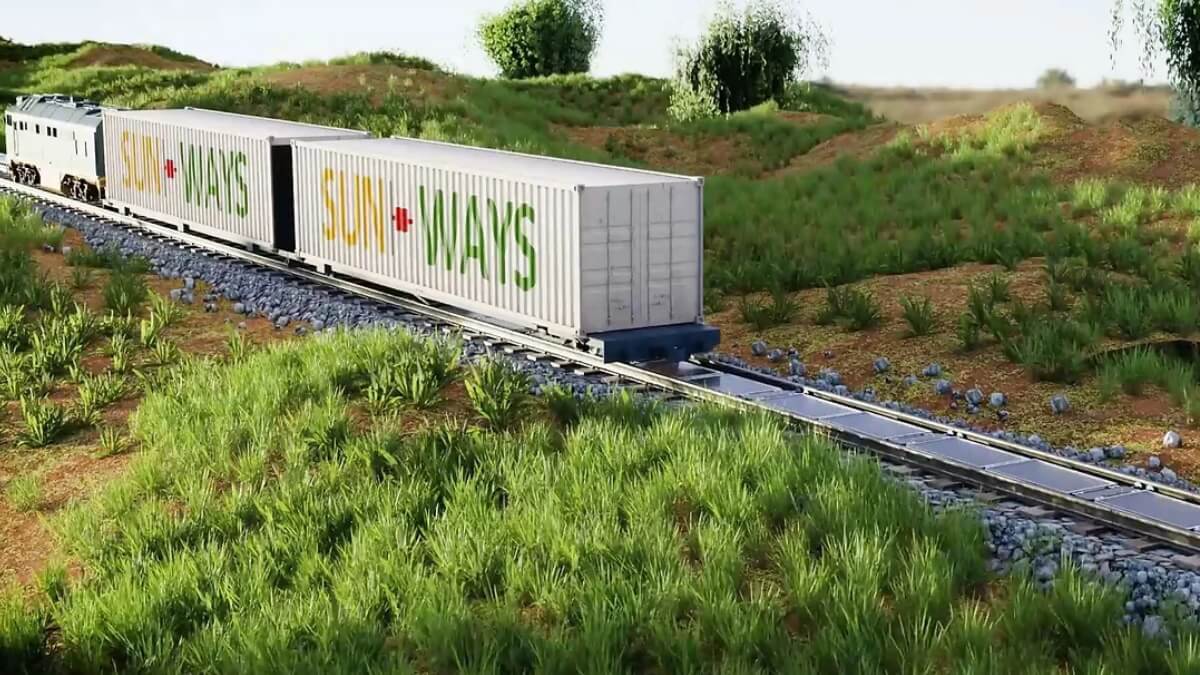A Switzerland startup had the idea of putting solar panels between train tracks – and they’re just the latest company to be working on such a project.
Is it a great idea or a stupid one? We outline the main arguments for and against below and you decide for yourself.
From a Fast Company report:
“[…] A Swiss start-up called Sun-Ways has come up with the idea to slot solar panels in between train tracks. The panels would be installed (and uninstalled for maintenance) by a specially built train that would “unroll” them like a carpet. This would happen during the night, when fewer trains are running.
As wild as it all sounds, Sun-Ways actually has two competitors. Greenrail and Bankset Energy, respectively located in Italy and England, are already testing similar concepts. But Sun-Ways stands out in two ways. For one, it uses standard-size panels, whereas the others use smaller panels that are placed on top of crossties. And unlike its competitors, Sun-ways doesn’t require manual installation. It has a train for that!”
Sun-Ways will have a $560,000 test pilot program later this summer near the city of Neuchatel, installing 60 solar panels in a 140 feet long installation.
Why would you put solar panels between train tracks?
There are multiple arguments for having such solar farms but the major one is relying on the huge amount of unutilized space created by trains. Since trains only occupy a very small part of a track at a certain time, the solar panels would be unobstructed most of the day.
There’s also a popular argument against solar farms that says they can be eye sores, as well as some who say endless solar panel fields occupy too much usable land or disrupt local ecologies. By using already existing infrastructure like train tracks, Sun-Ways can respond to those arguments.
Also read: France Passes Law To Force All Large Parking Lots to be Covered By Solar Panels
So, why not use solar panels between train tracks?
For one, because trains generate a lot of vibration and residue when passing, with oil leaks being common, which would mean a lot of maintenance for the solar panels. Worse off, in most parts of the world trains still flush toilets outside, over the tracks, so maintenance of the solar panels would involve handling hazard waste.
That maintenance would also have to be done with minimal disruption to train schedules, so solar panels between train tracks would only work in areas with little traffic.
What do you think, could these challenges be solved? Is this an idea that could work to help us achieve cleaner energy?
Also read: First Fusion Energy Artificial Sun Runs For 20 Seconds At Over 100 Million Degrees
Follow TechTheLead on Google News to get the news first.























